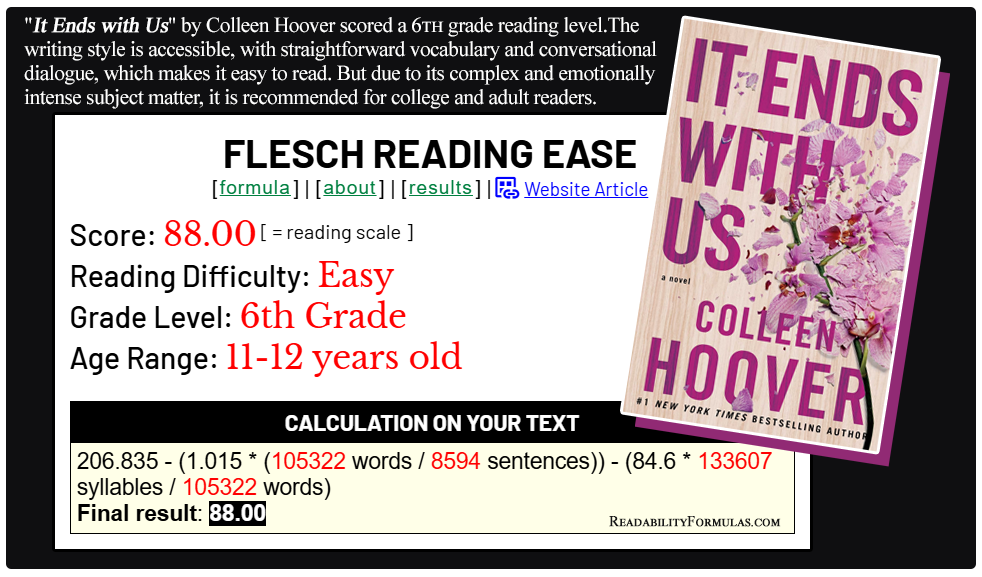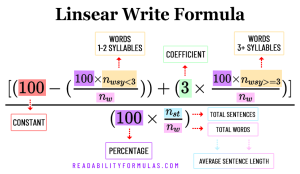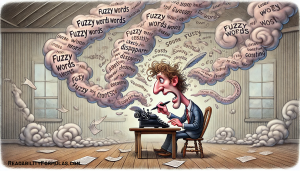 Flesch Reading Ease Formula (FRE) is one of the pioneering readability formulas that writers and non-writers still use today. Rudolph Flesch, an author, writing consultant, and a supporter of the Plain English Movement, developed this formula in 1948. Raised in Austria, Rudolph Flesch studied law and earned a Ph.D. in English from the Columbia University. Flesch, through his writings and speeches, advocated a return to phonics. In his article, A New Readability Yardstick, published in the Journal of Applied Psychology (1948), Flesch proposed the Flesch Reading Ease Readability Formula.
Flesch Reading Ease Formula (FRE) is one of the pioneering readability formulas that writers and non-writers still use today. Rudolph Flesch, an author, writing consultant, and a supporter of the Plain English Movement, developed this formula in 1948. Raised in Austria, Rudolph Flesch studied law and earned a Ph.D. in English from the Columbia University. Flesch, through his writings and speeches, advocated a return to phonics. In his article, A New Readability Yardstick, published in the Journal of Applied Psychology (1948), Flesch proposed the Flesch Reading Ease Readability Formula.
The formula uses syllables per word and words per sentence to calculate a score. This score, from 0 to 100, shows text simplicity—higher scores mean easier reading.
The formula is as follows:
Flesch Reading Ease Formula
206.835 − (1.015 × Average Sentence Length) − (84.6 × Average syllables per word)
The constant 206.835 is a baseline score to determine the readability score of a text.
The coefficient of 1.015 determines how average sentence length impacts the readability score.
The second coefficient of 84.6 weighs the impact of word complexity—specifically, the number of syllables per word—on the readability score.
Flesch suggested that shorter words with fewer syllables are easier to read and understand compared to longer, more complex words. The formula scores words with 1-2 syllables as easy to read, while words with 3+ syllables are more challenging.
Additionally, Flesch believed shorter sentences help readers digest information and understand text more quickly and easily. Therefore, texts with shorter sentences receive higher readability scores.
The final score falls within a scale of 0 to 100, where higher scores indicate greater readability. A text with a score of 90-100 is considered very easy to read, while a score below 30 suggests a challenging, academic-level text.
Users refer to this reading level chart to match the score:
| FRE Score | Reading Level |
| 90-100 | Very Easy |
| 80-89 | Easy |
| 70-79 | Fairly Easy |
| 60-69 | Standard |
| 50-59 | Fairly Difficult |
| 30-49 | Difficult |
| 0-29 | Very Confusing |
The Flesch Reading Ease has some drawbacks:
- The formula focuses mostly on word and sentence length. It misses other key factors like sentence structure, word variety, and clearness.
- The formula lacks accurate scoring for reader-specific context. A jargon-heavy text could score high despite being hard for the average reader.
- The formula looks at one aspect of readability. It could miss other elements that affect how well a reader understands the text.
Flesch Reading Ease correctly scored “It Ends with Us,” an award-winning romance novel by Colleen Hoover, at a 6th grade reading level. The writing style is accessible, with straightforward vocabulary and conversational dialogue, which makes it easy to read. But due to its complex and emotionally intense subject matter, most teachers and librarians recommend the book for college and adult readers.
 Despite these limitations, the formula’s simplicity and accuracy has made it popular across many disciplines of writing.
Despite these limitations, the formula’s simplicity and accuracy has made it popular across many disciplines of writing.
- Educators and publishers use the formula to check if textbooks suit different grade levels. Matching the reading level with students’ abilities improves learning and comprehension.
- In curriculum development, the formula helps prepare grade-appropriate reading materials for students, creating a balanced learning experience.
- Journalists and editors use the formula to ensure news articles are readable, reaching a broader audience effectively.
- In the digital realm, online journalists use the formula to make web articles reader-friendly, increasing engagement.
- Technical writers use the formula to create user manuals that are easy to understand, improving user experiences.
- In safety-critical industries, the formula helps craft clear safety instructions to avoid accidents and misunderstandings.
- Legal professionals use it to assess contract readability, ensuring clear terms and conditions for all parties.
- Companies use it to draft user-friendly privacy policies and terms of service, fostering trust and compliance.
- In healthcare, it helps create easy-to-read patient information leaflets and health materials.
- Government agencies use it to write clear public communications that is accessible to citizens from diverse backgrounds and literacy levels.
Your can score your text using either the Flesch Reading Ease or the Flesch-Kincaid Readability Formula with our Readability Scoring System.
Scott, Brian. “Learn about the Flesch Reading Ease Formula.” ReadabilityFormulas.com, 19 Nov. 2024, https://readabilityformulas.com/learn-about-the-flesch-reading-ease-formula/.







